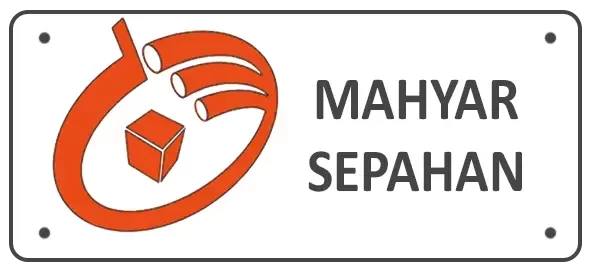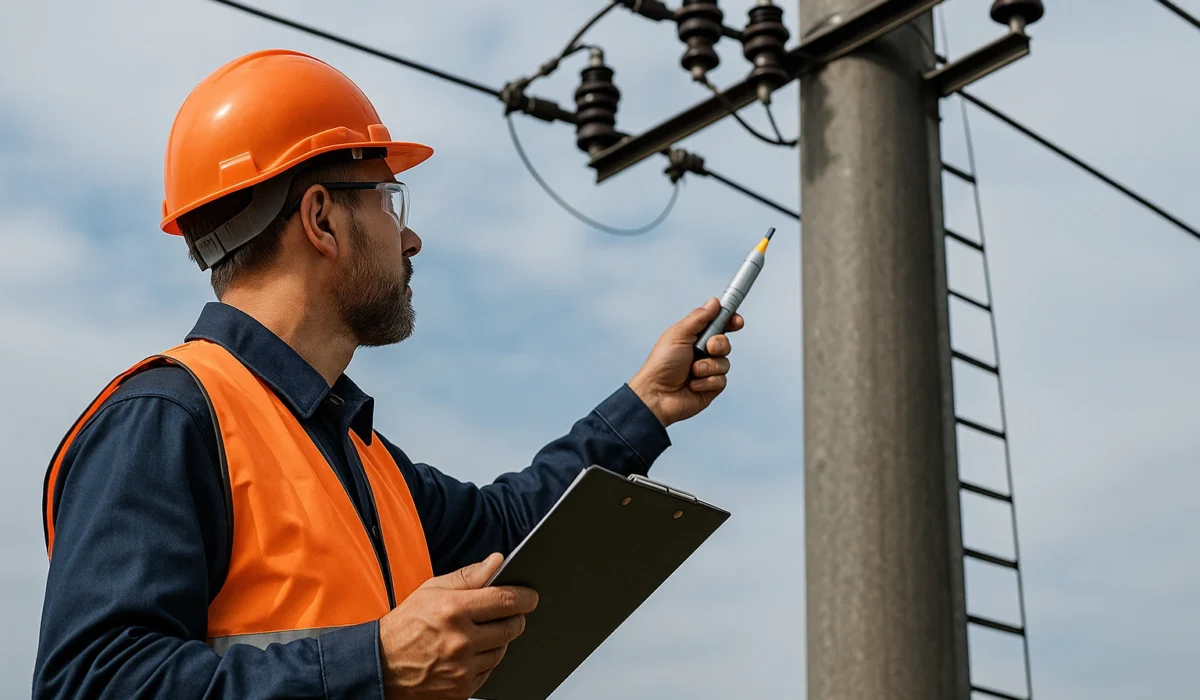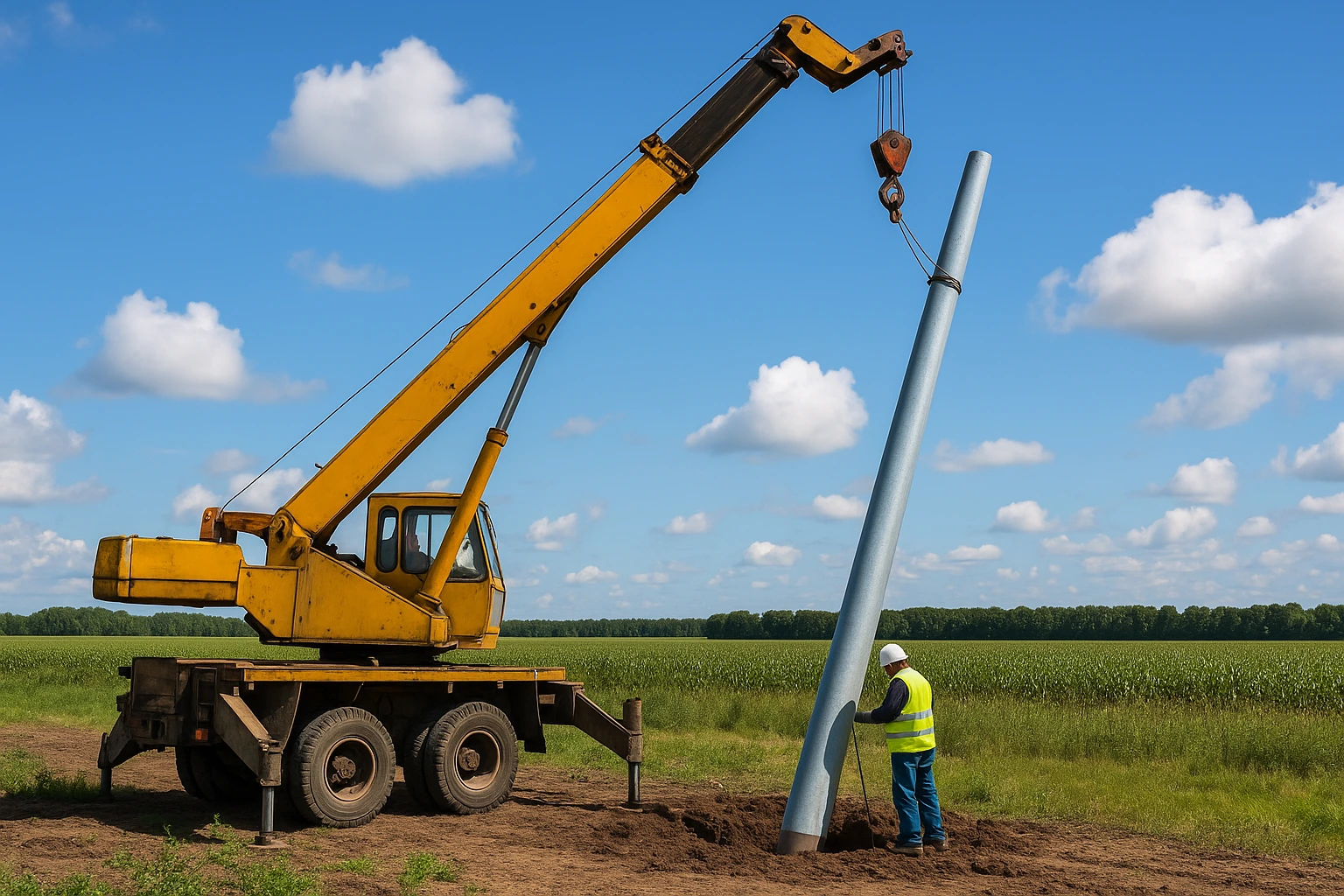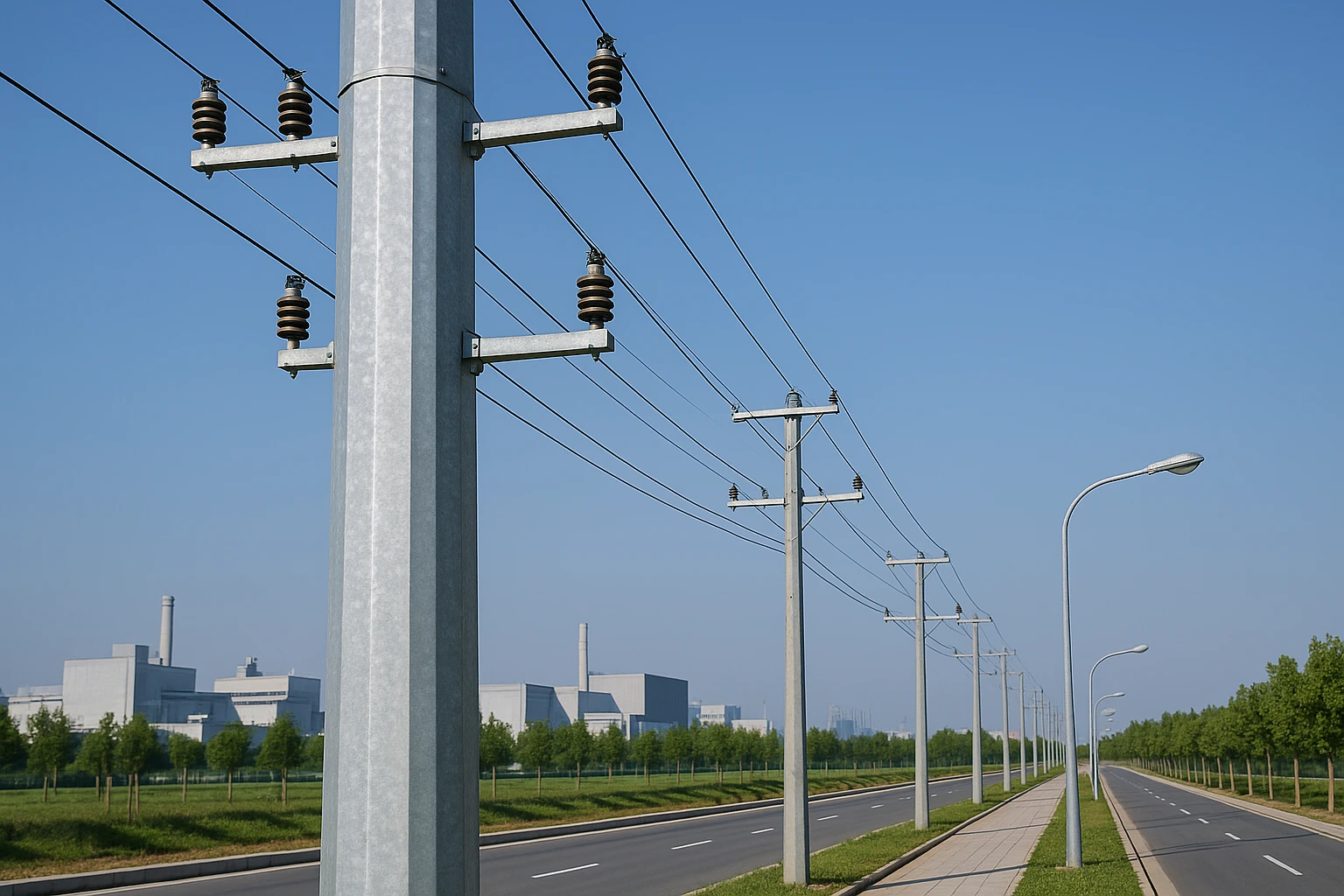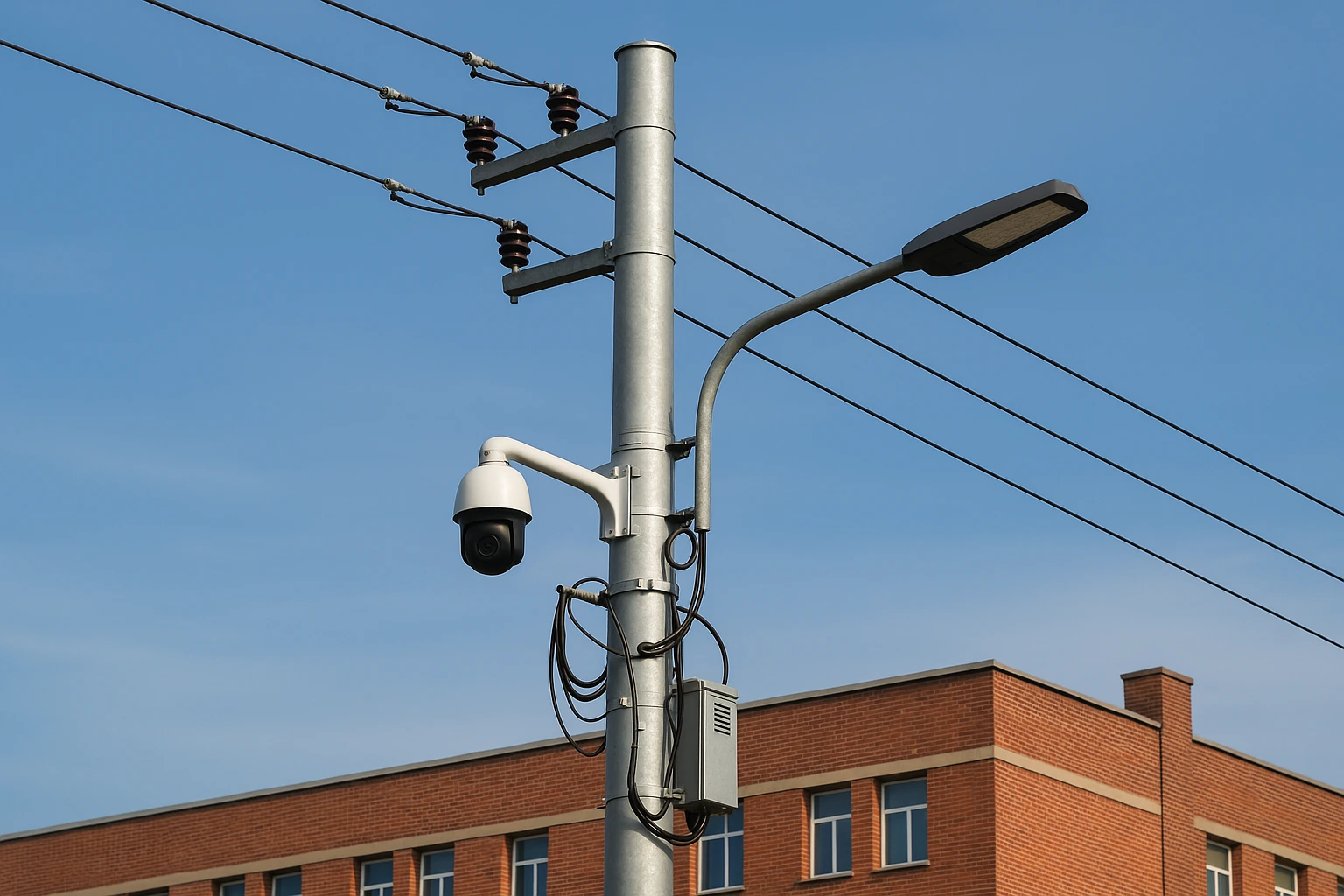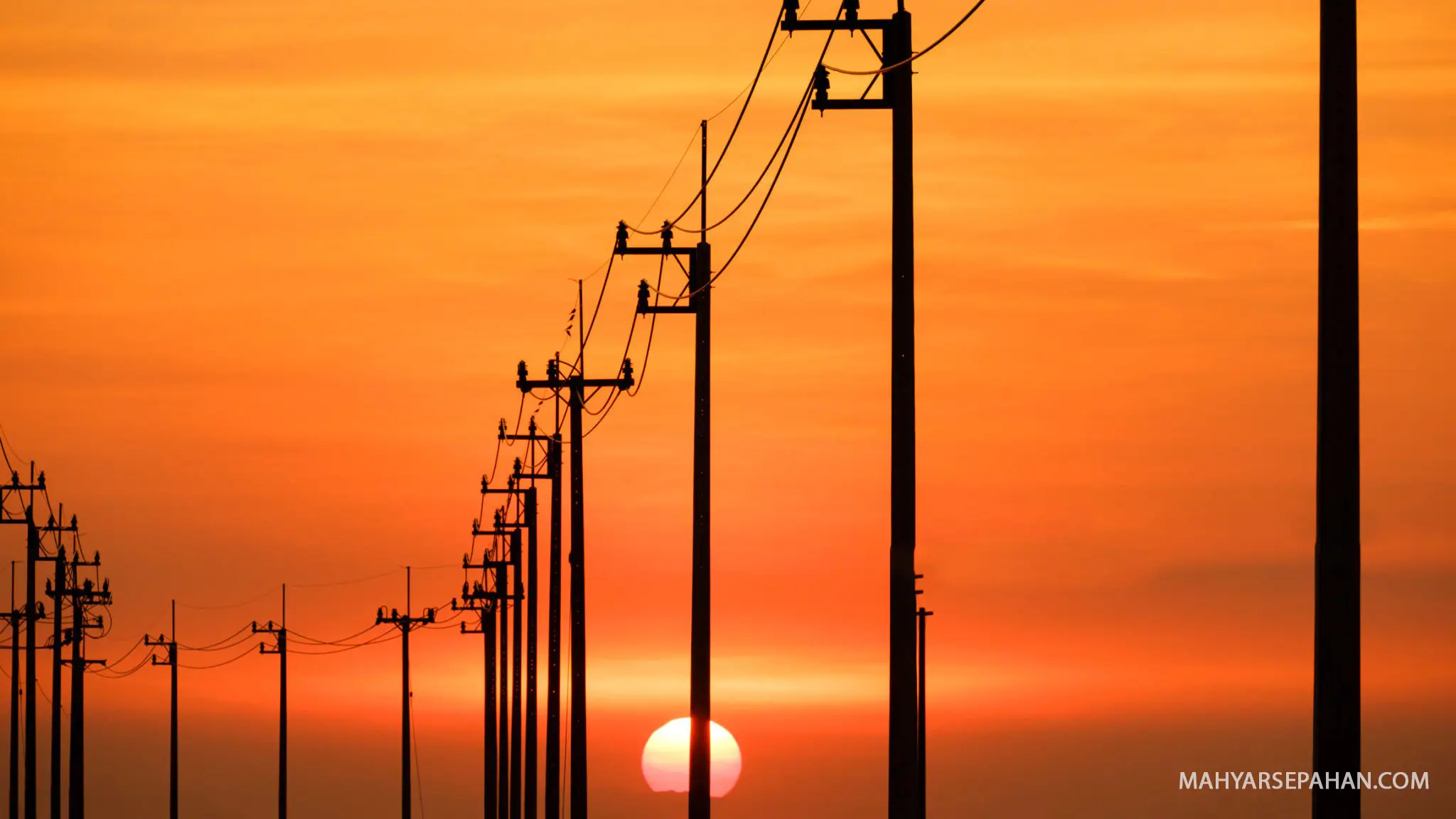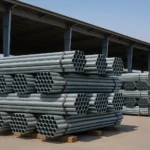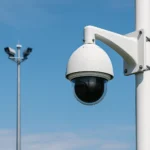What is a Utility Pole?
A utility pole, also known as a power transmission pole, is a vertical structure used to support and carry electrical transmission and distribution lines. These poles play a vital role in power infrastructure and are manufactured in various types depending on their specific application.
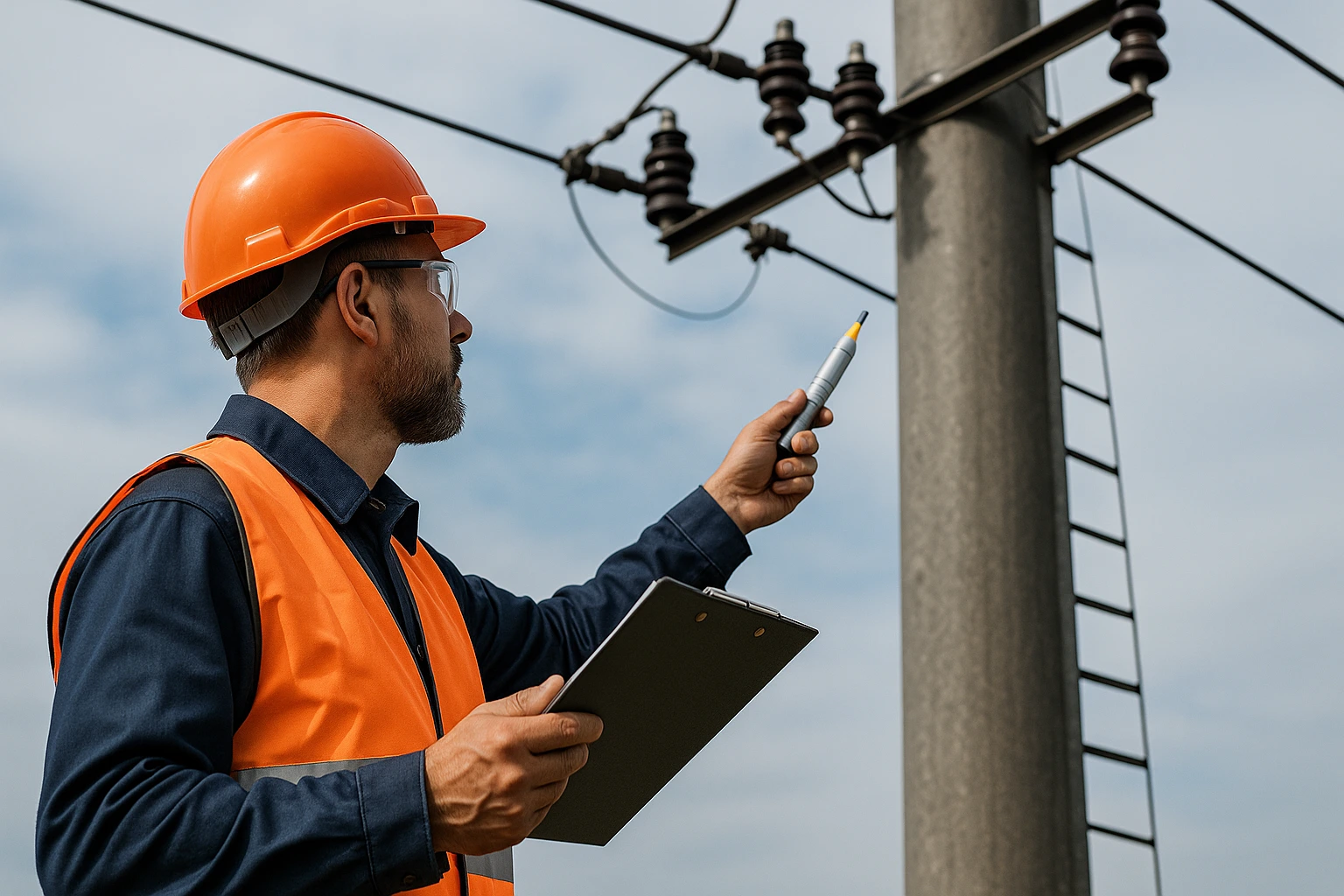
Types of Utility Poles
Content list
1. Concrete Utility Poles
Concrete poles are widely used in power distribution projects due to their high resistance to weather conditions and long lifespan. They are manufactured in various sizes such as 9, 12, and 15 meters, with different strength ratings.
2. Galvanized Steel Utility Poles
Steel poles with hot-dip galvanized coating offer excellent corrosion resistance, making them suitable for humid environments. They come in various heights and are easier to install due to their lighter weight compared to concrete poles.
3. Wooden Utility Poles
Wooden poles are used in some rural areas and temporary projects because of their lower cost and easy installation. However, they have lower resistance to fire and decay.
4. Composite Utility Poles
Composite poles are made of reinforced polymer materials, offering lightweight structure and high resistance to corrosion. They are ideal for special environments and specific engineering projects.
Advantages of Galvanized Utility Poles
High corrosion resistance: The hot-dip galvanized layer protects steel against corrosive elements.
Long service life: Galvanized poles can function for decades without replacement.
Easy installation: Their lower weight compared to concrete poles simplifies transport and setup.
Recyclability: Galvanized steel is recyclable and environmentally friendly.
Applications of Utility Poles
Urban and rural electricity distribution networks
High and low voltage transmission lines
Street lighting, roads, and parks
Industrial and power plant projects
Mounting telecommunication equipment and antennas
Utility Pole Installation Process
1. Site Assessment:
Includes soil analysis, weather conditions, and project requirements.
2. Excavation:
A hole is dug based on the height of the pole and soil type, ensuring proper depth.
3. Pole Installation:
The pole is placed into the hole and stabilized using concrete or other suitable materials.
4. Equipment Installation:
Insulators, cables, and other components are mounted on the pole.
5. Final Inspection:
Ensuring structural stability and safety of the installation.
Utility Pole Pricing
The price of utility poles varies depending on the type, material, height, and strength. For example, concrete poles with different strength ratings are available on the market, and their prices are determined by technical specifications and market conditions.
Key Tips for Buying Utility Poles
Select the Right Type: Choose the appropriate pole type based on environmental conditions and project needs.
Check Compliance with Standards: Ensure that the poles meet international manufacturing standards.
Compare Prices: Review prices from multiple reliable sources to find the best option.
Inspect Coating Quality: For galvanized poles, the coating should be uniform, without cracks or flaking.
Technical and Economic Comparison of Utility Pole Types
| Feature | Concrete Pole | Galvanized Steel Pole | Wooden Pole | Composite Pole |
|---|---|---|---|---|
| Weight | Very heavy | Lighter than concrete | Light | Very light |
| Mechanical Strength | Very high | High | Low | High |
| Corrosion Resistance | Moderate | Very high | Very low | Very high |
| Initial Cost | Medium | High | Low | High |
| Service Life | 40–50 years | 50–60 years | 15–25 years | Over 60 years |
| Best Use Areas | Urban & Industrial | Industrial & Humid | Rural, Temporary | Special (Chemical, Marine) |
| Recyclability | No | Yes | No | No |
Special Applications of Galvanized Steel Utility Poles in Mahyar Sepahan Projects
Mahyar Sepahan has successfully utilized galvanized steel utility poles in major power transmission, urban infrastructure, and international projects. Some notable applications include:
1. Electrification of Northwestern Mountainous Regions in Iran
Use of high-strength steel poles resistant to humidity and frost
Installation using lightweight hydraulic cranes
2. Urban Power Distribution in Seismic Zones
Steel poles with flexible design and high bending resistance
Fast installation in narrow and high-traffic urban streets
3. Urban Street Lighting Project in Isfahan
Use of hot-dip galvanized tapered tubular poles
Mounting of LED lights and traffic signage on the pole body
Galvanized Steel Pole Production Process at Mahyar Sepahan
Step 1: Steel Sheet Cutting and Forming
High-quality ST37 or ST52 steel sheets are cut to specified dimensions and shaped into tubular or polygonal profiles.
Step 2: Longitudinal Seam Welding
Submerged Arc Welding (SAW) or CO₂ welding is used depending on the pole section.
Step 3: Hot-Dip Galvanizing
After acid washing and surface cleaning, the poles are immersed in molten zinc to ensure full surface coverage.
Step 4: Quality Control Tests
Includes coating thickness, weld uniformity, flexural resistance, impact test, and load test.
Standard Tests for Utility Poles
Flexural Test: To evaluate wind and cable load resistance
Galvanization Test (ASTM A123): To assess zinc coating quality
Insulator Tension Test: To ensure mechanical load endurance
Adhesion Test: For paint or zinc bonding integrity
Visual Inspection & Hammer Test: To detect surface cracks
Installation Requirements According to Iranian Power Standards (Tavanir & ISIRI)
Allowed spacing between poles: Based on conductor type and tension
Minimum pole height: 6 meters for LV and MV phases
Maximum slope tolerance: 3% on inclined terrain
Use of concrete bases or guy wires: For tall poles and windy areas
Safe clearance from buildings and trees: To ensure operational safety
Market Analysis of Utility Poles in Iran
1. Key Market Drivers
1.1 Rise of Infrastructure and Urban Development Projects
With the expansion of residential complexes, industrial zones, and special economic areas, the demand for low and medium-voltage power networks has significantly increased. Consequently, the need for durable and reliable utility poles has grown in parallel.
1.2 Growth of Smart Cities
Modern urban projects increasingly use galvanized steel poles for supporting LED lighting systems, surveillance cameras, and digital signage. Mahyar Sepahan contributes to this transformation by producing modular and multi-purpose galvanized poles.
1.3 Replacement of Old Wooden Poles in Rural Areas
The Ministry of Energy has initiated programs to replace aging wooden poles with galvanized steel or concrete ones, creating a broad and sustainable market for domestic manufacturers.
Galvanized Pole Exports by Mahyar Sepahan
In recent years, Mahyar Sepahan has leveraged its high-quality products and mass production capabilities to gain a significant share in the export market. Notable export destinations include:
Iraq: Corrosion-resistant galvanized steel poles for border substations
Afghanistan: Lightweight poles suitable for mountainous regions
Armenia & Turkmenistan: 12m and 15m poles for cross-border transmission lines
African Countries: Poles with specialized anti-humidity and anti-sand coatings
Mahyar Sepahan’s galvanized poles meet global certifications such as ASTM A123 and ISO 9001, reinforcing the company’s international credibility.
Optimized Pole Design and Structural Innovation
Using advanced mechanical engineering software and Finite Element Analysis (FEA), Mahyar Sepahan’s design team has developed poles with the following features:
Reduced steel usage while maintaining flexural strength
Polygonal sections instead of tubular for greater resistance
Perforated bases to reduce weight and accelerate installation
Integrated mounting for fiber optics, antennas, and smart devices
Utility Poles and Sustainable Infrastructure
In today’s world, infrastructure must be not only strong—but smart and sustainable. Galvanized steel utility poles are a key component in this shift, supporting multiple technologies simultaneously.
Modern Applications in Smart Cities:
Environmental IoT sensors and data loggers
Integration with public Wi-Fi and 5G transmitters
Solar-powered lighting systems independent of the grid
Concealed cabling for security cameras and communication
Galvanized multi-purpose poles are a forward-thinking solution for future-ready cities.
Environmental Considerations in Pole Production
Mahyar Sepahan aligns its manufacturing with sustainable development principles:
Reduction of industrial waste during galvanization
Full recyclability of steel components
Extended service life = lower resource consumption and carbon footprint
Multi-use poles reduce the need for additional camera or antenna bases
Technical Documentation and Certifications
For international tenders and export contracts, Mahyar Sepahan provides full technical dossiers, including:
Galvanization Certificate (ASTM A123 compliant)
Material Analysis Reports (DIN EN 10025 standard)
Flexural Strength Test Reports (IEC 60652 standard)
Engineering Approvals from Iran’s Ministry of Energy and Electrical Engineering Board
Full Technical Datasheets, Structural Drawings, and Mechanical Specs
Technical Specification – Mahyar Sepahan Galvanized Pole Sample
| Parameter | Value |
|---|---|
| Section Type | Hexagonal Polygonal |
| Total Height | 12 meters |
| Body Thickness | 3 mm |
| Welding Type | Submerged Arc Welding (SAW) |
| Surface Coating | Hot-Dip Galvanized |
| Nominal Flexural Strength | 1800 kg·m |
| Lateral Load Capacity | Up to 700 kg |
| Expected Lifespan | Over 50 years |
Project-Oriented Pole Selection Checklist
| Criterion | Key Question |
|---|---|
| Environmental Conditions | Is the area humid, industrial, or coastal? |
| Network Type | LV/MV distribution or high-voltage transmission? |
| Mounted Equipment | Only cables or also lighting, cameras, telecom gear? |
| Transport Limitations | Is pole weight a logistical concern? |
| ROI Period | Does pole lifespan justify investment cost? |
The Future of Utility Poles – Emerging Technologies
Smart poles with pressure and impact sensors
Cable temperature warning systems integrated into poles
Modular plug-and-lock poles assembled on-site
Nanostructured coatings for enhanced corrosion resistance
Self-cleaning surfaces with ceramic technologies
Safety in Installation and Operation
Safety is a top priority in pole installation and maintenance. Mahyar Sepahan provides detailed training and checklists alongside every product.
Installation Safety Essentials:
Precise leveling before concrete stabilization
Use of PPE: helmet, insulated boots, safety ropes
Checking all electrical connections to avoid arcing
Observing legal clearances from telecom/gas/water lines
Avoiding unstable or highly corrosive soil locations
Annual Maintenance Checklist
| Frequency | Inspection Item |
|---|---|
| Every 6 months | Surface inspection for zinc corrosion |
| Every year | Insulator and earthing connection check |
| Every 2 years | Flexural and impact test on critical poles |
| Every 5 years | Recoating or touch-up of damaged sections |
Network Design Considerations: Load and Spacing
Proper pole spacing and selection depend on:
Cable type (cross-section, weight, tensile limit)
External forces (wind, snow, icing)
Ground type and soil firmness
Load role (passive holder or active transformer support)
Bending radius in corners or branch points
Engineering Tools: PLS-CADD, PoleFD, and similar software are used to calculate load limits, structural design, and force distribution.
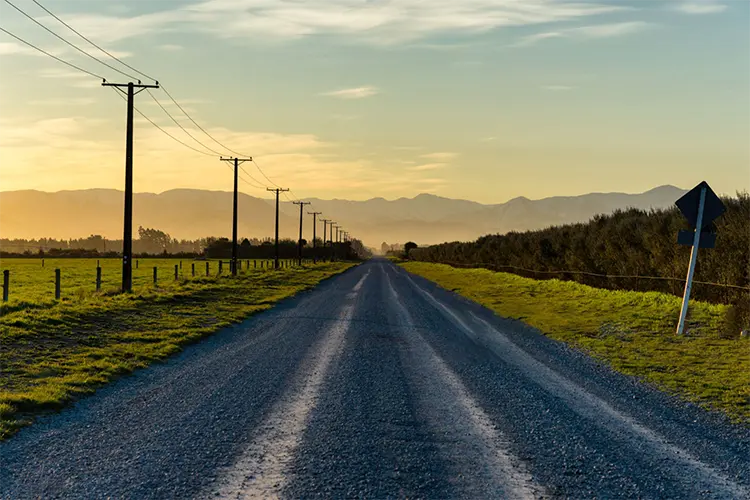
Final Recommendations for Engineers and Contractors
If you are a project engineer, client, or electrical network contractor, consider the following key factors before selecting a utility pole:
Climate Compatibility: In humid or coastal areas, only galvanized steel poles with thick coatings are recommended.
Pole Weight: For difficult terrains like mountainous or narrow paths, using lighter poles is more practical.
Multi-Purpose Design: Today, one pole may support lighting, internet, CCTV, and signage. Its design must accommodate all these.
Reliable Supplier: Products without quality control, testing, or warranty may cause significant financial and operational losses.
Mahyar Sepahan’s Dedicated Services for Large Projects
Custom pole design based on your project drawings
Delivery of pre-cut, pre-drilled, ready-to-install poles
Structural calculation booklets and technical datasheets
Export certificates and customs coordination for international projects
On-site installation support and technical supervision (upon agreement)
Final Summary
A utility pole is not just a steel or concrete structure—it is a vital backbone of energy transmission, infrastructure development, and smart city evolution. Poor technical choices can lead to years of maintenance costs, service disruptions, safety risks, and environmental damage.
With its industrial production line, expert engineering team, global certifications, and strong track record in domestic and export markets, Mahyar Sepahan is ready to design and supply utility poles tailored to your project’s specific standards and requirements.
Frequently Asked Questions (FAQ)
Q: Which is better—steel or concrete utility pole?
A: For urban and humid areas, galvanized steel poles are superior due to their long lifespan, lighter weight, and faster installation.
Q: Do galvanized poles rust over time?
A: No. The zinc coating protects the steel from moisture and corrosion.
Q: What heights are commonly used for utility poles?
A: Typical heights include 6, 9, 12, 15, and 18 meters. For high-voltage lines, poles up to 30 meters are also manufactured.
Contact Information & Order Invitation
📞 Looking for a Trusted Manufacturer?
If your project involves power lines, urban lighting, telecommunication infrastructure, or new development zones — get in touch with Mahyar Sepahan today.
Sales Office – Isfahan
Chaharbagh Bala Street, Kosar Commercial Complex, Phase 1, 6th Floor, Unit 802
Phone:
+98 31 3620 4994
+98 31 3620 4995
+98 31 3620 4996
WhatsApp Consultation: +98 912 118 0029
Online Request Form: mahyarsepahan.com/contact-us
Instagram: @mahyarsepahan
Business Email: info@mahyarsepahan.com
